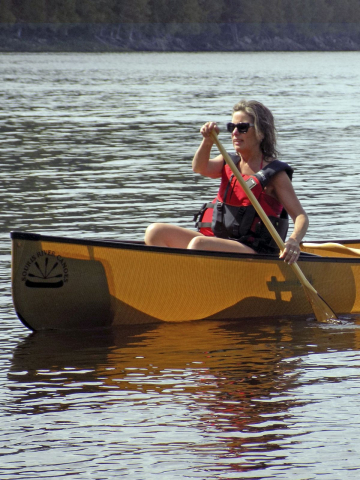 For many, the answer to this is “nothing” because there is often a very deep connection to water for those who have waterfront property. But, the question is really about what you should allow to come between you and your lake – literally.
For many, the answer to this is “nothing” because there is often a very deep connection to water for those who have waterfront property. But, the question is really about what you should allow to come between you and your lake – literally.
I was lucky enough to spend this last week out on Lake of the Woods in a favourite cabin, surrounded by trees, wildlife and, of course — water. I instantly felt a sense of calm and relaxation when I got there and as each day passed, a greater sense of respect and gratitude for this lake and its surroundings. For the most part, as I kayaked and canoed along the shoreline, I noticed many properties have kept a buffer of vegetation at the shoreline. They’ve kept things wild by letting the grass grow, letting the trees and shrubs stabilize their shoreline, minimizing the artificial structures and reducing disturbance. But, our lakes need everyone to do this, collectively, in order to have the biggest impact. Those who own waterfront property really do have a unique responsibility.
The zone from the water’s edge out to a depth of two metres is the most productive part of a lake and what happens upland of the shoreline can play a significant role in the health of that zone. One of the best lines of defence for property owners to consider are “buffers”, which are zones of natural vegetation at the shoreline that can help to keep the lake healthy. There are many benefits to maintaining a healthy buffer. Native plant buffers provide habitat for wildlife, including much-needed pollinators, and supply shade for fish in that nearshore zone. The roots of trees and shrubs bind the soil and provide protection from erosion; if removed, the soil can easily be washed away with wave action and with that comes excess nutrients entering the lake. Buffers act as a sponge, soaking up nutrients in the runoff from upland areas – the roots utilizing the nutrients before they hit the water. Reducing nutrients in the first place can be done by eliminating the use of fertilizers and, if you do have areas where you cut the grass, ensure the clippings don’t end up in the lake. There are a few other great options to reduce the amount of runoff entering the lake, including installing rain barrels, minimizing pavement or other hard surfaces, making your path to the lake meandering instead of straight and adding habitat islands (islands of trees and shrubs if you have a landscaped yard).
Research has shown that increased water clarity/quality can positively impact property value. While this shouldn’t be the sole reason for contributing to the health of the lake, it can be an important one. Being able to swim and fish and utilize the water from the lake are very good reasons for every shoreline property owner to be a good water steward and respect the connection between what they do on the land and how the water will respond to those decisions.
This series is provided as part of the International Watershed Coordination Program of the Lake of the Woods Water Sustainability Foundation (www.lowwsf.com).
Kelli Saunders, M.Sc., is the International Watershed Coordinator with the Lake of the Woods Water Sustainability Foundation
